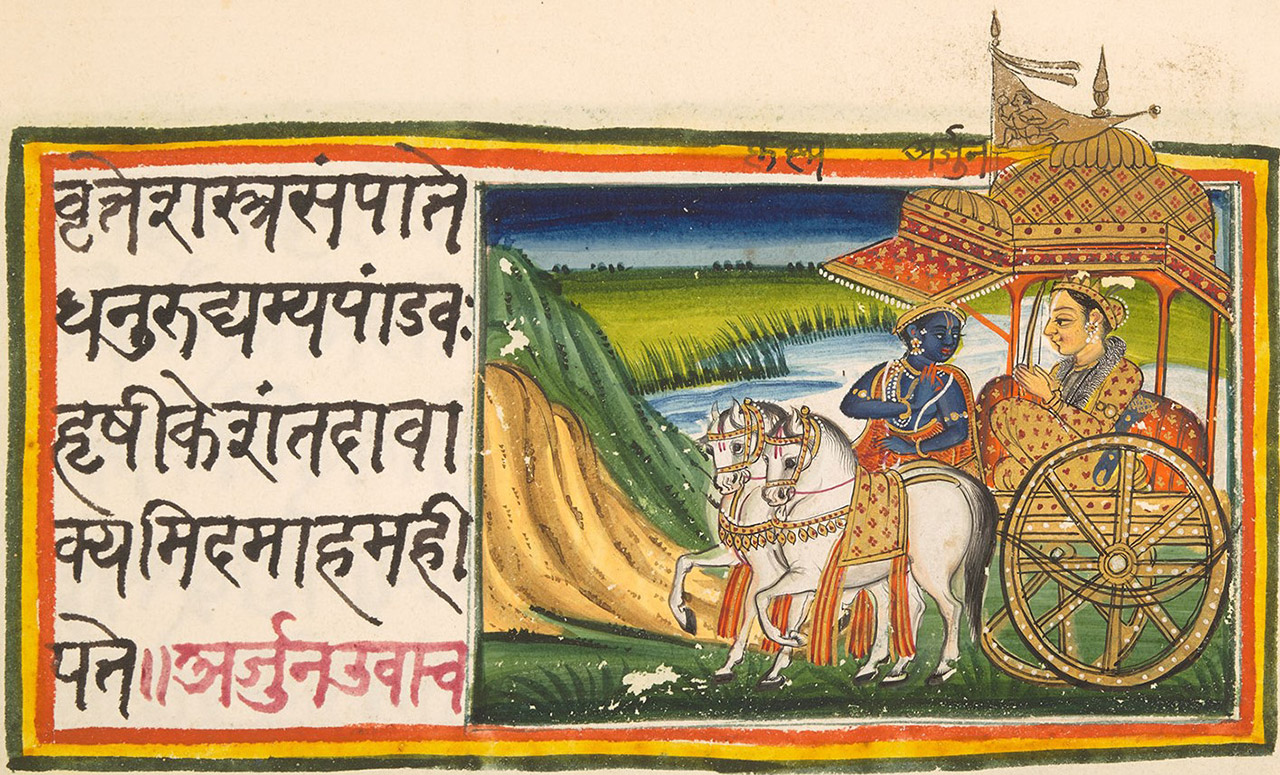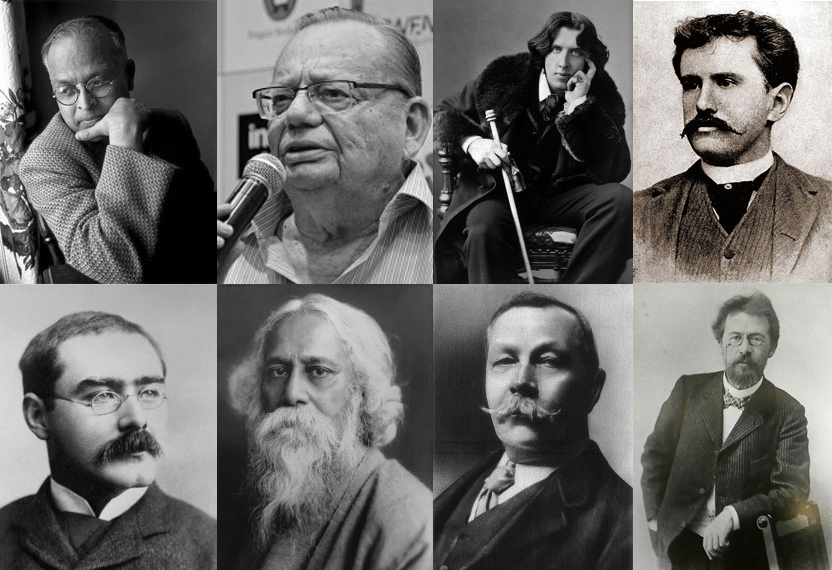
Without a doubt, the Indian literary tradition is one of the oldest in the world. It comprises 22 officially recognized tribal and foreign languages like Persian, French, Portuguese and English. While a significant amount of the Indian literature is written, a lot more is propagated orally in regional languages, all of which have received an enormous reception worldwide.
The first ancient Indian literature was Sanskrit literature which comprised Rig Veda, Mahabharata, and Kannada, all of which were written in the first millennium BCE. They were then followed by Marathi, Urdu and into the modern times, with Rabindra Nath Tagore, a bengali writer who went on to become the first Indian to receive a Nobel Prize for his literary work.
A Brief History of Indian Literature
During the anti-colonial period, the Indians began gauging themselves with the rest of the world in education. To keep pace with the world’s developed literature, the Indian linguist created genres unknown to the past. Genres like fiction, essay, lyrical poetry, theatre, criticism and literary history started to be all been shaped according to Indian demands and public reception.
The essence of the writings suffered a sea-change, apart from revolution in forms. The increasing pace of industrialization and urbanization exposed literary imagination to the experience of the city. The impact of science and rationality encouraged authors to criticise institutions and practises that did not otherwise face logical scrutiny. The other worldly concerns of pre-modern literature gave way to a growing curiosity for the current reality around them. In addition to bringing the ancient gods, Indian creativities established new gods. Men in society and nature were the foremost of these.
Literature education has been made easy as students can use the best academic services available online when doing college assignments like writing work, essay writing, and other services. Students often use Edubirdie when they face complex essays and research topics. This is especially true when they come from a different background but have to write in another.
Tagore: The Arch-Writer

Tagore is a perfect representation of traditional and modern Indian writers. Although he was deeply interested in Indian traditions, he cannot be said to be a traditionalist. He was not a blind modernist, even though he was attracted by West and the rest of the world. In plays like Bisorjon, he dramatized his dissatisfaction with the outmoded conventions. He also criticised the blind pursuit of modernity in Muktadhara without regard to humans and nature.
The same can be said about some of his fiction works and poetry; they created matchless idioms, communion, solitude and hope. In one line, Tagore calls upon the nation to let love be the light of the world.
Being the most significant Indian literature figure in the 20th century, most of his writings typifies many other outstanding contemporary writings in different native languages like Kuvempu, Subrahmanya, Kannada Prasad Hindi.
After Independence, this attitude of millennial hope changed. The self-axis and the world axis never converge in fantasy as it does in reality. Although the fruits of the liberation from the yoke of foreign authority fell into Indians’ hands, with the new dawn there was violence. The killing of Mahatma Gandhi, the father of the nation, the division of the subcontinent into India, and Pakistan, led to massacres that took heavy toll of life and property during the Hindu/Muslim revolt. Urdu poet Faiz Ahmed Faiz said, ‘This is a false dawn. Caravan, move on,’
There were two reactions to this disillusionment: one was the sorrowful hope that the world would be reconstructed; another was to undertake a clinical diagnosis of the disease. The first led to the progressive writing movement, an ideology that puts an end to inequity and exploitation; while the second led to introspective modernism. Novels such as Tamas (Hindi) by Bhisham Sahani and Alai Osai (Tamil) by Kalki made a healthy diagnosis of communal hysteria and called upon the depths of humanism. Nabanna, Bijon Bhattacharya’s tragic Bengal classic, spoke about universal hunger in Bengal during the fake famine.
The introverted withdrawal from each other’s space was visible in works of writers like the Bengali poet Jibanandadas or the Gujarati poet Raoji Patel: ‘When did I become an alien, tell me, in your house?’ Sometimes, in works of great writers like the Hindi poet Muktibodh the twin impulses to optimism and despair combined.
The works of the progressive group were directed towards Soviet socialist realism while the introverts were affected by modernism in the West. The shifting literary forms mirrored this. In modernist experimentation, Fiction bid farewell to linear narrative, poetry to metre and drama. In the 1960s and 1970, the French academy of existentialist philosophy found great favour. For example Ashadh Ka Ek Din by Mohan Rakesh (Hindi) and Yayati by Khandekar (Marathi), the alienation of the author from his self and from the world was dramatised.
In the literature created in India following the mid-70s, the anguish and boredom of the modernists and the futural comforts of the progressives were examined critically. This period saw the growth of formerly disadvantaged, non-literate parts of marginalised India, not simply just the proclamation of emergency; dalits, tribals and women, which began to understand the self and the world in different light than their predecessors.
Dalit writers

Dalit authors first began dismantelling the complete edifice of Indian ideals in Maharashtra and later in other regions, with the teachings of the first large modern Dalit leader, Ambedkar. They have not only punished in the heart of their burning poems the foundations of Caste Society like the Marathi poet, Namdev Dhasal, but also challenged the same society to rebirth. The autobiographic form was restored in a fresh way by Dalit sensibility in several languages. Even the straightforward story of their lives was a severe shock to the respectable society.
The best Dalit authors introduced not only a new substance but also a revolutionary new language, which drew pictures and metaphors of the non Dalit world unknown to people in life. They produced great heroes from the ordinary men and women of Dalit. Sakavva, the protagonist of Devanuru Mahadeva’s Kannada Dalit novel, has the claim of being scared of Yama’s Death, for she cannot conceive of greater pain than she has previously experienced.

Since the beginning of the first millennium, there have always been excellent female writers in India, among whom some excel their male counterparts in creative talent. The women who debuted in the 70s, however, reveals a new kind of relationship with the world. They refused to look at the world from male bifocals and started to honour their ideas of women. Senior writers such as Mahashweta Devi (Bengali) and Sugathakumari (Malayalam) had blazed the way in their books.
The emergence and growth of feminist movements had given women the defiant idiom of a writer, based on the rejection of male idiom, as in the mighty expressions of the first Dalit English woman poet, Meena Kandasami.
Tribal and other marginalised authors, like Dalits and women, are adding to contemporary Indian literature.
Development of Indian English Literature

India’s development in English Literature gained momentum as British imperialism became more consolidated in India. The first definitive Indian work in English has a diversity of opinions, however critics agree that Indian literature in English goes back to at least the early 19th century. Three sources give their impetus to its origins – educational reforms by the British Government, missionary activities, and the reception by the upper-class Indians of English and literature.
English literature was developed in India because of the mixture of the social codes between British and Indians. The mindset of the people and a wider acceptance in the country of the English language led many writers to use English as a medium of education and expression, which led to the steady development of English literature.
The work of writers continues to be valued by award-winning institutions like Jnanpeeth and Saraswati Samman, centre academies and states, as well as by large sections of readers. The creative expression of literature in India is now ready for another significant change, as e-books come, internet space is being opened and new techniques of electronic reproduction are being introduced.
The Impact of Western Education
One cannot doubt the significance of western education on the growth and development of Indian literature. When the Indians embraced western education, literature writers had no choice but to develop literature pieces that were in line with western education.
Today, things have become even better as new Indian literature students have better facilities at their disposal. Modern tools like citation generators, digital resources for references etc have proven to be of great benefit.
Conclusion
The reception of foreign languages in India, especially the English language, brought many radical changes, yet history still views mixed feelings. Thus, the rise of Indian literature can be attributed to the intermingling of social codes between the colony and colonialist Indians and British. The British changed the mindset of the Indian literature writers and prompted many writers to improve their writings and embrace English as a medium of literature development.
Author Bio:
Julius Sim is a well-known figure in the corporate sector and he’s currently working as the Head of Support Team at Edubirdie. His new-age management techniques and strong educational background have helped his team stand out in the customer service sphere. He’s a training expert as well and holds sessions for young students every weekend.





